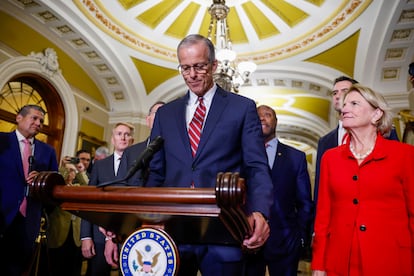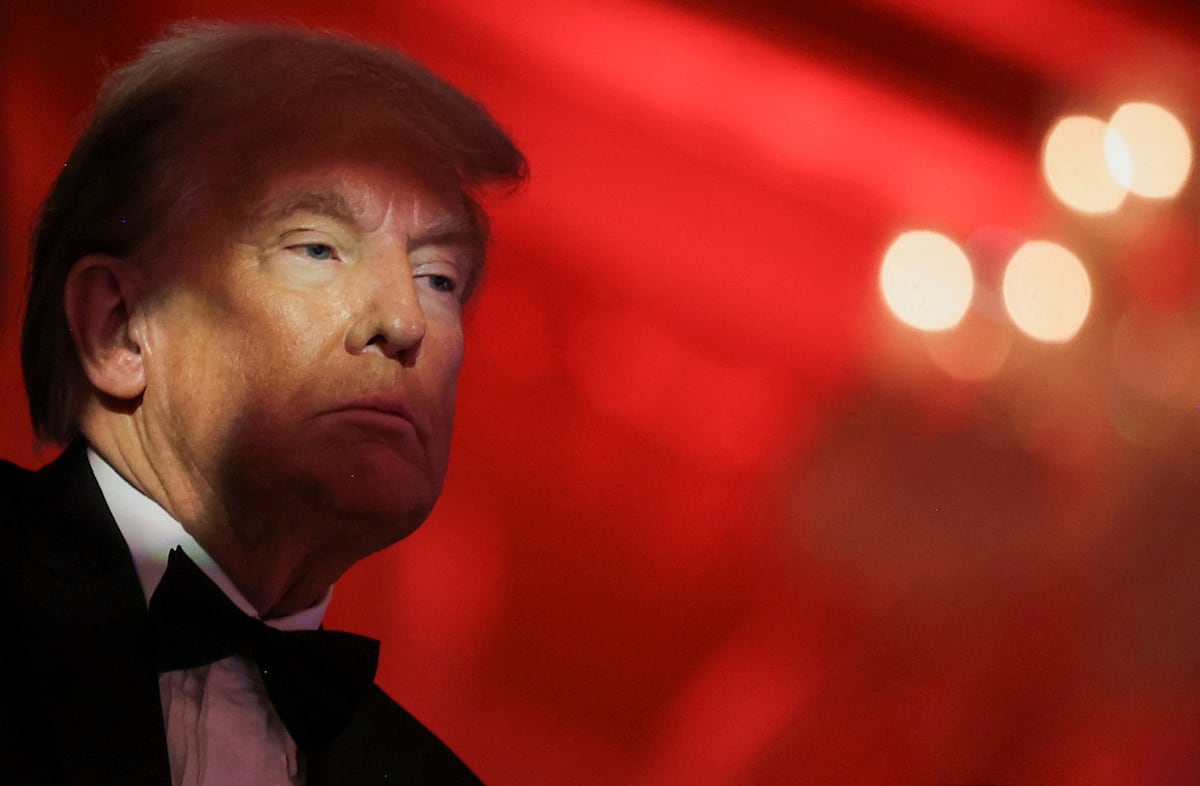Donald Trump tries to force the institutional seams of American democracy to carry out his controversial appointments. The president-elect intends to generally use the figure of recess appointments (during periods without sessions of the Senate), a legal shortcut that would allow his nominations to go ahead without going through the Senate confirmation process. To do this, he needs the complicity of Congress, where Republicans have a majority in both chambers. It remains to be seen if they give their leader carte blanche so that Matt Gaetz can take office as Attorney General or Robert F. Kennedy as Secretary of Health, whom even some Republicans do not consider suitable for their positions.
Trump, emboldened in his second term, is willing to test the loyalty of congressmen. His transition team has also refused to sign agreements with the federal government for the FBI to investigate the candidates’ backgrounds, another common step in the process.
Hundreds of senior US appointments are up for Senate confirmation, including federal judges (including those on the Supreme Court), Cabinet members, heads of key federal agencies, and ambassadors. The corresponding commission checks the candidates’ background, questions them in a public hearing and votes on whether or not to refer the nomination to the full Senate, which votes on confirmation. It is considered part of the checks and balances of the American system. At the same time, it is a somewhat dysfunctional procedure, which usually delays, for months even, the appointment of unblemished candidates.
Trump wants to avoid this long process and to do so he wants to resort to recess appointments, a figure contemplated in the Constitution since its original drafting. When the United States was founded in the 18th century, Congress met less frequently, communications were slow, and there were recesses of several months. The idea was that this would not prevent important positions in the Administration from being filled.
Some presidents, however, began using it as a legal shortcut to name candidates whose confirmation they found difficult. They took advantage of those non-session periods, but what has never happened until now is that Congress declares itself in recess with the express plan of paving the way for a president’s appointments. Bill Clinton made 139 recess appointments and George W. Bush, 171, before the senators reacted and began holding symbolic sessions without content to avoid pauses of more than three days, in which it was understood that this figure could not be used.
Obama was the last president to use the formula: he did it 32 times before deciding to ignore even those testimonial sessions for several appointments that were challenged before the Supreme Court. In a 2014 ruling, the judges unanimously annulled these appointments, established that the symbolic sessions interrupted the recesses and that these had to last at least 10 days – with exceptions such as a national catastrophe – so that the president could make those appointments. without control of the Senate.
The question is whether congressional Republicans will be willing to bow to Trump’s wishes. Facing him is not easy. Before the Senate parliamentary group elected its leader this week, the president-elect had made his position clear in a message on the social network X: “Any Republican senator seeking the coveted leadership position in the United States Senate must agree to recess appointments (in the Senate!), without which we won’t be able to get people confirmed in time.”
“This is essential. There is no other way,” Elon Musk showed his agreement. Later, one of the candidates to lead the Senate Republicans, Rick Scott, declared himself willing to accept it: “100% agree. “I will do whatever it takes to get your nominations approved as soon as possible.”

SHAWN THEW (EFE)
The senators, however, elected John Thune as leader in a secret vote, who did not close the door to this type of appointment, but has a more nuanced position. He is in favor of confirming the appointments in the traditional way, but brandishes the legal shortcut as a warning so that the Democrats do not stop the process. “I think all options are on the table, including recess appointments. Hopefully it won’t come to that, but we’ll know pretty quickly if the Democrats want to play or not,” he said Thursday during an interview on Fox News.
Trump presented his request as a matter of expediting the inauguration of senior officials. However, that was before announcing his most controversial proposals: Pete Hegseth, a Fox network host, to run the Pentagon; Tulsi Gabbard, an admirer of Vladimir Putin, for the intelligence services; Matt Gaetz, investigated for sexual accusations, drug use and misappropriation of funds, as attorney general, and the anti-vaccine Robert F. Kennedy as Secretary of Health. Now, it is interpreted as a way to avoid rejection, since even conservative senators have criticized some of these designations. Republicans have a 53-47 majority in the upper house, so a few defections would be enough for the candidates to be rejected.
Several senators have also made clear that they want the usual confirmation process to follow, but that may not be enough. Recesses of more than three days must be approved by both chambers by a simple majority, but if the House of Representatives and the Senate do not agree, it is the president, Trump himself, who has the power to set the duration of the recess. recess, something that has never happened before. So it could be enough for Trump to have the House of Representatives approve a recess of more than 10 days to move forward with his plan even if the Senate rejects it.
Although this fits in the letter of the Constitution, its spirit would be forced both in terms of depriving the Senate of its function and in the suspension of the activity of Congress itself. “It’s textually plausible, but it has nothing to do with why any of these provisions were originally conceived,” explained Josh Chafetz, professor of law and political science at Georgetown University in an interview on MSNBC. “Other presidents have used the power of recess appointments, but they have never gone down this route, which is actually a kind of conspiracy with the House of Representatives to expel the Senate from sessions, even if the Senate does not want to enter into sessions. recess,” he added.
“Regardless of how senators react to Trump’s recess appointment ploy, this will not be the last time the incoming president forces Republicans to choose a side: loyalty to Trump, or loyalty to their rights and responsibilities as lawmakers,” says George Washington University professor Sarah Binder.
Although recess appointments are temporary, those elected can continue in their positions until the end of the next session, which in practice could hold them for almost two years. In addition, the president can re-appoint them with the same formula when that term expires.










